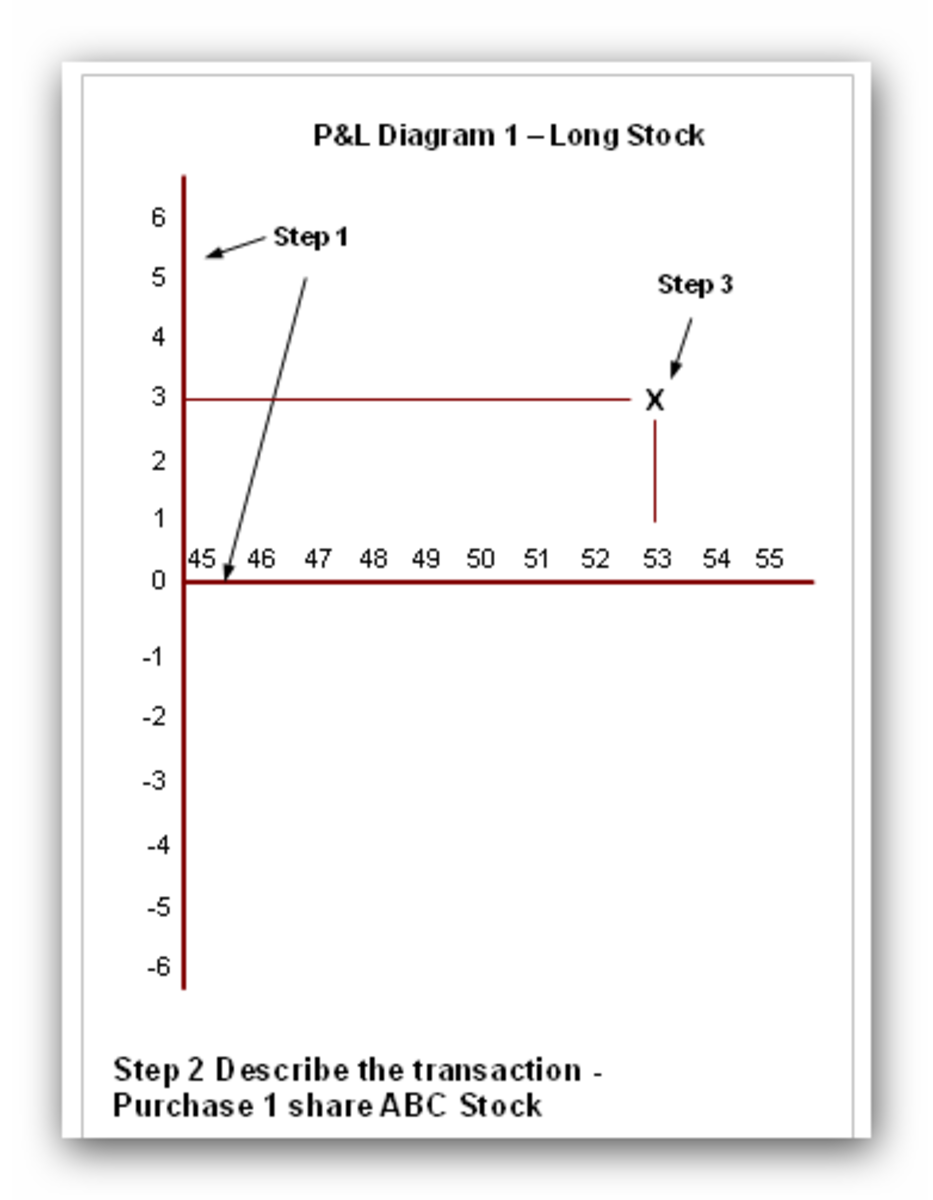Financial Leverage
Attempting to Balance Financial Risk and Reward
In the financial sense, leverage is the process by which a business person, entrepreneur or investor is able to greatly increase the return on an investment through the use of borrowed money.
A conservative investor, defined here as one who does not like risk, makes a secure loan to another person or business that is willing to take a great deal of risk.
For the conservative investor this is a chance to get the investment back plus interest – there is little risk of losing the principal loaned and the modest rate of return assured.
The risk taker who is borrowing the money will use the money for a high risk investment that promises a big return but also has a high potential for total loss of the investment. For the risk taker the lever is the degree of risk taken.

Defining Leverage
Before continuing, let's take a look at the term leverage itself and see how the concept of leverage is basically the same whether we are using it in the mechanical or financial sense.
Leverage refers to increasing force by use of a lever. A lever is simply a device which increases, or multiplies, the force of energy applied as distance is increased.
This is the mechanical definition of leverage as developed by Archimedes in the third century B.C. A simple, every day, example of lever and the principle of leverage is the teeter totter (or seesaw in some places) on a playground.
It takes great effort to lift up the end where the person (even if a child) is sitting, but very little effort to lift the person up when you push down on the other end.
In this case the lever is the board and, by increasing the distance along the board between you and the person sitting at the other end, the amount of energy (effort) required to lift becomes easier and easier.
Archimedes claimed that, with a long enough lever, a single individual could lift the entire world.
In mechanics, the longer the distance, the less energy needed to complete the same amount of work.
Think of a wrench – it takes considerably more energy to loosen a nut if you hold the wrench at the neck, close to the nut, but, if you hold the wrench further away along the handle, very little energy is needed to loosen the nut.
Financial Leverage
In the financial world, leverage is the amount of risk a person is willing to take.
The greater the risk, the greater the potential payoff. Of course, the greater the risk the greater the investor's chance of losing the investment which is why not everyone uses financial leverage and, of those who use it, why many fail.
There are only two things that can be done with money – spend it or invest it.
Spending involves near zero risk. A person receives his paycheck, goes to the bank where he cashes it for a combination of cash and cashier's checks (or money orders) payable to his creditors for bills due and then goes to the mall and spends the rest on goods he wants or needs. Little chance of loss here.
If he applies a small amount of leverage by holding some of the money while he shops around for a better deal on goods, thereby having some cash left over for other things, he incurs some risk in having it lost or stolen but is also able to buy more as a result of finding deals on what he needs.
Putting the money in a government insured bank account, investing in a U.S. Treasury security, investing in a high quality corporate bond, etc. all involve increasing the risk slightly but also produce a return in the form of interest.
With each of these investments there is a slight risk of loss as well as the risk of dying and not being able to enjoy the use of the m.
Since both the risk and rewards in these examples are very small, the concept of financial leverage, as commonly used, does not apply other than to illustrate the point that everyone of us uses leverage, with the difference between the average worker and the big time speculator on Wall Street or in the City (London financial district) being a matter of degree.
So, what are some types of serious financial leverage and how do they work? Here are some examples:
Purchasing Stock on a Margin
Buying Stocks on the Margin: this involves borrowing money from a stockbroker and using it to purchase shares of stock.
The stock becomes the security for the loan and the investor pays, in addition to the usual broker fees for buying and selling shares of stock, interest on the money borrowed.
If 100 shares of stock are purchased at $10 per share and the shares then increase to $20 per share within the next couple of weeks, the investor sells the 100 shares for $2,000, repays the broker the $1,000 borrowed to purchase the stock and, after paying the broker the interest due on the loan plus the buying and selling fees, pockets a profit of close to $1,000.
Of course, if the stock goes down, rather than up, in price the investor faces what is known as a margin call. With this the investor has to either immediately repay the broker the difference between the original price of the stock (which is what she originally borrowed) or have the broker sell the stock to prevent further loss. The investor is still liable to the broker for the amount of the decline in price plus interest and broker fees.
When you hear stories about men jumping out of the windows of their offices after receiving a telephone call from their stock broker (or see it in old movies) during the 1929 U.S. stock market crash, these were the result of margin calls. Only here, these people had in many cases mortgaged their homes to purchase stock and then borrowed against the stock to buy more stock.
These investors were highly leveraged. However, some, like Bernard Baruch and Joseph Kennedy (father of President John F. Kennedy), made fortunes this way and got out of the market early, while others, who knew little about investing but assumed stock prices could only go up, lost everything through margin purchases.
Options
Options: An option is the right to purchase a piece of property (stock, real estate, etc.) at an agreed upon price during an agreed upon time frame.
Options can be used to either speculate, in which the speculator expects the price to rise, or to hedge (insure) against a rise in price.
For instance, a speculator may feel that the price of a stock will rise within the next few months or that land prices will rise in the near future and is therefore willing to pay the owner for the right to purchase the stock or real estate (or other property) at a price they agree upon now.
Generally the agreed upon price is higher than the current price. If the price rises above the agreed upon price within the life of the option, the speculator pays the agreed upon price, immediately sells it at the higher market price and pockets the profit.
If the price doesn't rise, the option expires and the speculator loses the price paid for the option (however, the buyer of the option, whether price of the property rises or falls, saves having to tie his own money up in buying the property and holding it in anticipation of its rising).
Investing in stock options in the United States is very easy as these are now listed on the major stock exchanges and can be brought and sold anytime during the life of the option.
Selling Stock Short
Short Sales: A short sale involves a speculator contacting his broker and selling the stock owned by another investor (the other investor agrees before hand to allow this and receives compensation when the stock is used in this manner).
The assumption here is that the stock is about to fall in price. If the stock falls as expected, the speculator purchases it at the new, lower, price, restores it to the owner and pockets the profit.
HOWEVER, if the price rises, the speculator is forced to purchase it at the new, higher price, restore it to the owner and has a loss.
Business Borrowing
Businesses, whether large global corporations or sole proprietors, can increase their profits by leveraging their business through borrowing.
All businesses need money and there are only two ways to get money. The two ways are from investors (who receive a proportionate share of ownership and profits as a result) or borrowing (in which the lender receives interest and a promise to repay the principal at a future date).
Leverage in a business refers to the portion or percent of debt to equity (equity is the value of what the owners of the business have invested in the business). The greater the percent of debt to equity the more highly leveraged the business is said to be.
When investing one's own money and that of investors in a business the risk is limited to the loss of each person's investment. If I need $5,000 to start a business and take that money from my savings account then the most I lose if the business fails is the $5,000 from savings. If the business is a success, I get to keep all of the profits.
However, assume I can produce ten times as much product and make ten times as much profit by investing $50,000, but lack the remaining $45,000. If I get nine friends to each put up $5,000 in return for one tenth of the business each and the business works as planned, the business makes ten times the profit but my one-tenth share is the same as if I had kept the business at the $5,000 level and I get no more than one-tenth the profit as the other nine-tenths goes to my friends who invested $5,000 each.
However, suppose I get my friends to loan me the $5,000 each at 10% interest. If the business succeeds as expected, I can pay my friends the $500 each in interest as well as pay down the $45,000 they loaned me out of the profits each year. This will be a drag on my profits initially but as soon as the loans are repaid these expenses disappear and I am left as the sole owner of a $50,000 business.
Of course, if the business fails I am in debt to my friends for $45,000 plus interest. The greater the risk, the greater the leverage which translates into greater profits when successful and a greater loss if unsuccessful.
Again, whether we are speaking of a global corporation or sole proprietorship, the higher the leverage of debt to equity the greater the risk of the business but also the greater the potential profit for the owners.
When buying shares of stock in a company, your share of any profit will be much greater the more the company is leveraged – of course, your chance of losing your investment if the company goes bankrupt is also greater.
How Do You Feel About Leveraged Investments
Do You Feel About Leveraged Investments
© 2006 Chuck Nugent









